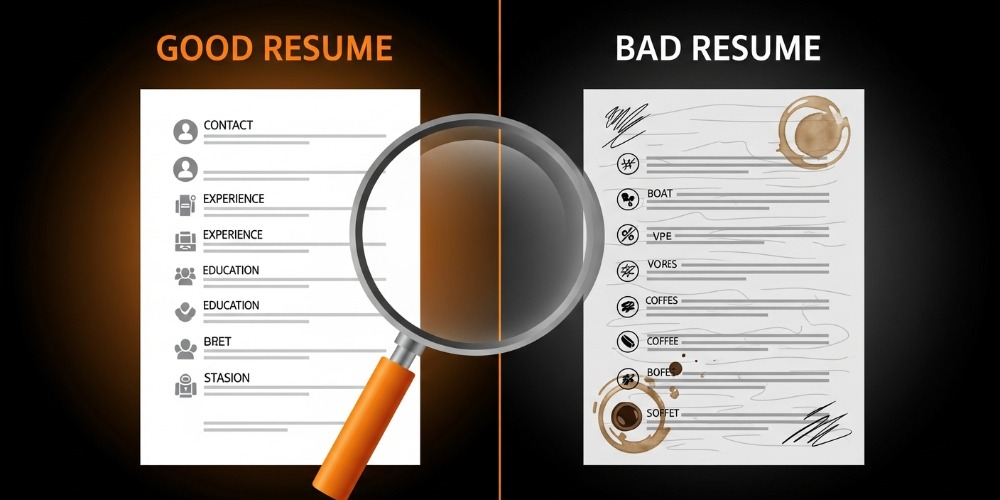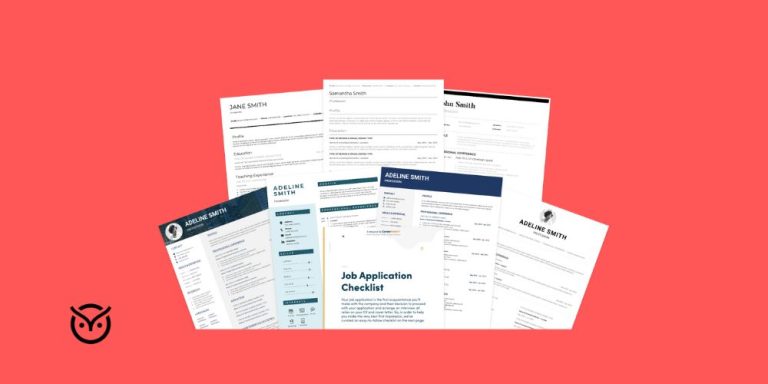Good Resume vs Bad Resume: Why Recruiters Need More Than Gut Instinct

TL;DR
- Recruiters often rely on gut instinct early, but that can lead to resume fails
- Hasty judgments miss strong candidates hidden under a poor resume
- Clear, data-guided evaluation helps spot good vs bad resume differences
- Tools (ATS, parsers) plus structured scoring reduce bias
- Combining instinct with data makes hiring fairer and smarter
Recruiters get bombarded with resumes daily. Yet many hiring decisions still start from a gut reaction rather than a solid, reliable process. That reliance on instinct can turn a good resume vs bad resume into a subjective game where layout, buzzwords, or first impressions unfairly tilt choices.
What if recruiters backed their instincts with evidence? What if they could spot red flags and gems systematically? In this blog, you will see how recruiters often slip up when they rush through resumes. You’ll find out what really separates a strong resume from a weak one. You’ll also learn simple ways to bring order and the right tools into hiring so the process stays fair and quick.
Why Do Recruiters Still Rely on Gut Instinct When Reading Resumes?

High volume, low time
Many recruiters handle dozens or even hundreds of resumes for a single role. That pressure pushes them toward a quick snap judgment rather than deep reading.
Cognitive shortcuts
Our brains prefer heuristics. If we see a clean layout, a big brand name, or polished language, we give favorable impressions quickly. That’s natural, though not always fair.
Lack of structured guidance
Without scoring rubrics or criteria, recruitment becomes subjective. Instinct fills the void when no process exists.
Overconfidence in experience
Recruiters who have read thousands of CVs may believe they “just know” what signals fit. But experience doesn’t eliminate bias.
Habit and culture
Many teams inherit recruitment processes with no critique. “Always trust your inner read” becomes dogma unless challenged.
How Do Recruiters Miss Out When Judging Resumes Too Quickly?

Overlooking substance
A CV with bold fonts and flashy formatting may grab the eye but it may hide the lack of substance. A plain, well written CV from a strong candidate may get dismissed.
Letting bias creep in
Quick judgments open the door to unconscious bias, like school name, gaps, and unusual formatting, which may unfairly influence opinions.
Missing transferable skills
Someone may shift industries or roles. A fast scan might ignore good vs bad resume examples where the candidate’s potential lies in hidden skills, not in exact past titles.
Penalizing diversity in formats
Some resumes include creative layouts or non-standard structures (one column, visual elements). Instinctive judges might flag them as “messy” even when the content is solid.
False negatives from filtering tools
If recruiters lean too much on automated CV screening or keyword matching, they may reject a candidate whose phrasing is slightly different. Relying on shortcuts and screening tools without review can lead to resume fails.
Spot the Missed Talent — Timed Challenge
You’ll see 5 resume snippets. You get 10 seconds each to shortlist or skip. Can you spot the hidden gems under pressure?
Ready to test your hiring reflexes?
Click Start to begin. The timer will kick in on the first snippet. Choose Shortlist or Skip before the clock hits zero.
Have you ever judged a resume too fast?
Good Resume vs Bad Resume

This is a quick comparison of what sets a good resume apart from a bad one. The differences may seem small, but they can make all the difference in how a recruiter views a candidate.
Good Resume vs Bad Resume — Comparison Table
A quick side-by-side of what to keep and what to fix.
| Feature | GoodResume | BadResume |
|---|---|---|
| Clarity & structure | Clean headings, consistent font, logical flow | Crowded layout, inconsistent styles, clutter |
| Relevance & focus | Tailored content, clear objective & key achievements | Generic content, lacks focus, filler statements |
| Quantified results | Uses numbers (“increased sales by 30%”) | Vague claims (“responsible for improving sales”) |
| Keywords & phrasing | Uses context-appropriate keywords, avoids overstuffing | Keyword dumping, buzzwords without substance |
| Readability | White space, bullet lists, easy to scan | Dense paragraphs, walls of text, poor spacing |
| Error-free | Proofread, consistent formatting, correct grammar | Typos, inconsistent dates, awkward phrasing |
| Flexibility | One page or two pages based on content | Double-sided unnecessarily or crammed onto one page |
Here’s how some secondary keywords map in:
- An example of bad resume might pack every detail into one page, use multiple fonts or stretch margins.
- Bad resume or poor resume often fails basic readability or shows a chaotic structure.
- A bad CV sample may rely heavily on buzzwords rather than showing what the candidate actually did.
- On the flip side, good vs bad resume examples help show what to emulate, such as quantifiable results, clean design, and clarity.
One more note: Should a resume be double sided? Typically, unless the candidate has deep experience justifying it, a one-page (or at most two-sided) resume is safer. If the second side is sparse or poorly organized, it can weaken rather than add to the impression.
A bad resume skips the basics like contact details, clear job titles or a proper timeline of experience. That is when hiring managers make quick judgments. They think the candidate is careless instead of taking the time to learn more.
How Should Recruiters Balance Instinct with Data?

Human intuition is valuable but only when used with structure. A recruiter’s instinct helps identify subtle traits like confidence or communication tone, but instinct alone can’t measure consistency, relevance, or growth. That’s where data becomes the equalizer.
When recruiters rely only on instinct, hiring often becomes a guessing game. Many mis-hires happen not because talent was missing, but because decisions lacked structure. Nine-tenths of employers say AI has sped up their hiring, and 77.9% report it’s saved them money. The best results come when instinct works hand in hand with evidence:
- Use standardized scoring sheets for every resume.
- Document reasoning behind each shortlist decision.
- Revisit rejected resumes quarterly to check for missed patterns.
Recruiters who blend their experience with a methodical approach to analysis are better positioned to minimize bias while still relying on their intuition. In essence, allow your instincts to ignite curiosity, but ensure the data ultimately informs your decisions.
Instinct + Data Balance — Rubric Table
Tick what you see in a resume. Count checks on each side. Use the legend to read your balance.
| Signal | Instinct check | Data check |
|---|---|---|
| First impression & tone | ||
| Relevance to role | ||
| Impact | ||
| Skill proof | ||
| Timeline clarity | ||
| Writing & structure |
Trust your read, then add proof. Pause until at least three data checks are true.
Good mix. Keep a short 5-point score and a one-line reason for your decision.
Numbers look solid. Do one soft-signal scan for clarity, growth, and teamwork.
Tip: copy this section into your ATS note. It keeps choices consistent without extra tools.
What Tools Can Help Recruiters Go Beyond Gut Feel?

Modern recruiting tools are built to reduce manual bias and reveal quality signals faster. Here’s how they help:
- Applicant Tracking Systems (ATS) – These tools manage candidate flow efficiently but can also become gatekeepers. Recruiters must learn to design better keyword filters so strong candidates aren’t wrongly filtered out. This is why understanding CV keywords to avoid filtering is critical.
- AI Screening & Resume Parsers – These solutions use context-based matching rather than rigid keyword search.
- Skills Assessment Platforms – Platforms like Vervoe or TestGorilla measure real skills instead of just reading job titles. They help identify candidates whose resumes might not “look perfect” but show true ability.
- Data Analytics Dashboards – Systems that measure hiring time, conversion rates, and performance scores highlight where instinct worked and where it didn’t. These dashboards help teams understand how much time recruiter spends reviewing resumes versus how much that time predicts actual performance.
How Can Recruiters Build a Fair Resume Evaluation Process?

A fair hiring process guarantees that every resume whether it is traditional or uniquely creative, receives equal consideration. Teams can accomplish this by looking past uniform judgments and incorporating structured fairness into each step of the hiring process.
Here’s a framework that works:
Standardized Templates
Every reviewer uses the same evaluation matrix. It includes factors like education, skills, experience level, and achievements.
Blind Screening
Remove identifiers like names, gender, or photos during the initial review. As a result, it reduces unconscious bias.
Automated Quality Checks
Use light automation to flag issues like missing data, date inconsistencies, or job gaps without rejecting outright. This step prevents bad CV samples from slipping through unnoticed while still saving time.
Reviewer Calibration Sessions
Hold quick weekly sessions where recruiters compare shortlisted resumes. This creates a shared understanding of what “good” looks like and prevents bias from creeping back in.
Feedback Loop
Revisit hires after 90 days to see which resume traits correlated with success. Feed that data into future evaluations.
Conclusion
Recruitment isn’t a guessing game anymore. The difference between a good resume vs bad resume often lies not in candidate quality but in how fairly recruiters review them. A thoughtful balance of instinct, data, and structured evaluation saves time, reduces bias, and increases hire quality.
Gut instinct may start the spark, but only evidence keeps the hire right. Modern recruiters who use tools, structure, and open thinking move beyond bad resume myths and build hiring pipelines that actually work.
Resume FAQs
It’s the average time a recruiter spends during the first scan of a resume. Within these seconds, they decide whether to shortlist or skip. A concise, clear layout helps make the right impression fast.
Yes. Many professionals with excellent skills struggle to present them well. Formatting, grammar or poor keyword use can make great profiles look weak. That’s why combining human review with data-driven screening matters.
By using competency-based scoring. Instead of weighing job titles, focus on measurable outcomes and transferable skills. Data tools and structured frameworks make this comparison fair and transparent.






